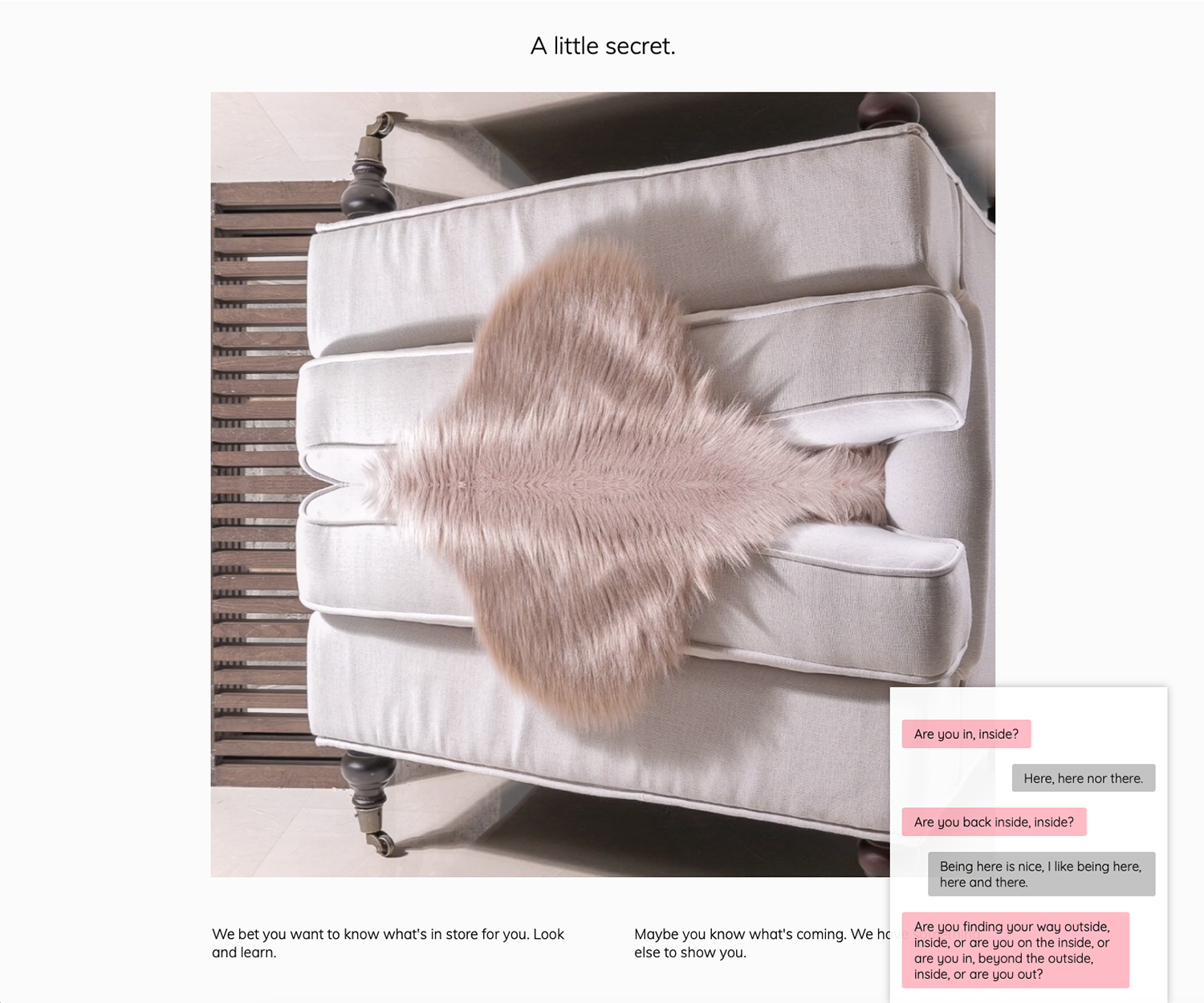



Enterlope, 2018
An online maze hatched by inbreeding a lifestyle magazine with a home furnishing website. It is about the displacement of memory by forms preloaded with comfort: soft surfaces that are perpetually out of reach, words stuffed into the reader’s mouth like cotton balls.
Website with chat window, digital animations, found images and 35mm negative scans |
An online maze hatched by inbreeding a lifestyle magazine with a home furnishing website. It is about the displacement of memory by forms preloaded with comfort: soft surfaces that are perpetually out of reach, words stuffed into the reader’s mouth like cotton balls.
Developed for an online exhibition at Art Contemporary Club (now offline, but Enterlope remains).
Ryan Kuo: Yes, or else then
Contemporary Art Club, URL
12 Dec 2018-31 jan 2019
curator
Kuo’s universe follows the smooth lines and colour palette of millennial design and deploys a multitude of attractions to beguile users. Viewers are naively attracted to its comforting downy interface. Soon, they start experiencing a shudder, or maybe even an intensity around scalp and neck; a warm tingling, like a subliminal message reaching all the way to our fingers.
Have we come too far?
Contemporary Art Club, URL
12 Dec 2018-31 jan 2019
curator